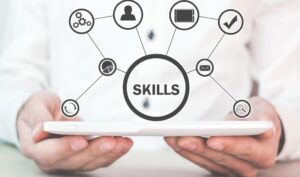
The Mini-MBA: A Stress-Free Way to Grow Your Skills and Advance Your Career
A conversation with CT Turner, President and CEO of GED Testing Service and Pearson Accelerated Pathways. Learning is a lifelong avocation, no matter what field

A conversation with CT Turner, President and CEO of GED Testing Service and Pearson Accelerated Pathways. Learning is a lifelong avocation, no matter what field

I’m always excited about live events. There’s something irreplaceable about people coming together to celebrate, to bond, to experience. The sense of community is priceless

Employee retention is a top priority for businesses, with one 2024 report noting that 64% of businesses say hiring and retention is their number one

We’ve all heard and seen the term growth mindset in boardrooms and on LinkedIn posts, where it’s practically become a mantra in the modern workplace.

“I know what I like, and I like what I know.” It’s easy to scoff at this old saying. Yet it applies to most of

Workplace evolution is natural. In its time, the digital workplace of the late 20th century was revolutionary. But that era has come and gone. And

As we take our first steps into 2024, it’s hard to imagine what this year will bring for HR and L&D. Last year was tumultuous,

These are exciting times for anyone involved in employee learning. As generative AI becomes mainstream, the learning content authoring possibilities seem endless. However, cool content

Today’s workforce is rapidly changing, as Boomers pass the baton to their Gen X, Millennial, and Gen Z counterparts. However, for many organizations, this transition

Corporate learning and development (L&D) is at a crossroads. Today’s workforce desperately needs a skills update to prepare for the future of work, and old-school

In recent years, digital transformation has been one of the hottest topics in leadership circles. Technology is central to this kind of complex, large-scale endeavor.

As technology continues to evolve, so does the way we connect and work with others. One of the newest advances in technology is the metaverse,

“Culture eats strategy for breakfast.” This quote is perhaps one of the most familiar business phrases of all time. Yet, while most leaders agree on

At what point in a career does learning stop? Hopefully, never! Most business and technical professionals realize that becoming proficient in a job and becoming

Imagine you’re a hard-working entry-level employee who’s been in your current position for less than a year. Your skills are solid, but they don’t help

Sponsored by Learnsoft The Skills Gap is Growing. So is Pressure on L&D Demand for skilled employees seems limitless. Modern technology and automation are displacing

These days, many people are dealing with stress from all kinds of personal financial concerns. This can harm workforce wellbeing — especially when people aren’t

Over the last three years, flexible and agile work models have been at the forefront of workplace disruption. Emboldened by work-from-home standards enforced during the

In HR circles, we talk a lot about employee development. Often, we focus on its role in improving workforce engagement and retention. But strategic learning

At some point, every organization will face an economic downturn. It could be a global recession or a serious slump in one of the industries

The current talent market poses numerous challenges for leaders and employees, alike. Perhaps the most disruptive force redefining the post-pandemic business landscape is persistently high

Bias can be a powerful factor in the recruitment process. In 2019, researchers from the University of Chicago and the University of California, Berkeley, began

The Great Resignation has not hit the world of work. According to the U.S. Bureau of Labor Statistics, the rates of resignation are highest among

Despite the economic downturn, training and professional development expenses in large companies rose from an average of $17.17 million in 2019 to $22 million in

The enterprise and the workplace are increasingly influenced by technology and technology-driven processes. With digital upskilling becoming an increasing priority, this often comes with a